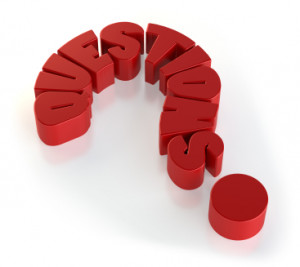You say that the creative process is available to all… even those of us who are not the traditional “creative types.” Can you give some examples of how this process can be used by someone who isn’t an artist?
Cal Harris, Jr., Musician
Thank you, Cal, for this fundamental question.
I know that as a musician you have an experience of the creative process, and we would all assume that to be the case. However, many people also assume the opposite; if they do not earn their living in a traditionally artistic field, then they are not creative.
Western society has divided itself into two camps: “the creative types” you mention and “the rest of us.” Historically this assumption about creativity is relatively new, and not every culture shares it.
I define creativity as life itself. And the creative process is not only something we use, it is something that uses us. Life is continuously evolving through us, through all that is. We all play a part in that process, consciously or unconsciously. Everything we do with our life force is a creative act. For better or worse.
We could be:
- Building a business
- Waging a war
- Writing a book
- Staging a crime
- Designing a building
- Destroying a reputation
Your personal creative process invites you to choose how you want to use your life force, how you want to engage with the process, and what kinds of products you want to produce in the world. It is the same for artists and non-artists alike.
Here are a few examples:
George has wanted to open his own restaurant for 20 years. He has envisioned all the details, done his homework, assembled the spreadsheets, and written the business plan. He’s developed menus and tested them on his friends. He’s even found a building. Then he stalls, and sets his project aside. About once a year, George goes through this process again. Twenty years have passed, and George still doesn’t have his restaurant. In the Wheel of Creativity, George sees the last 25% of the process that he’s been avoiding – the Cultivation quarter – where his vision takes form. He uses the steps in each station to push through his avoidance. He comes to trust the process, with all its ups and downs, and keep going. On opening day, not only does he have his restaurant, he also has himself back.
Mary is a highly successful project manager; but she works so much that her home life is in shambles. She knows she wants balance, but each time she tries to go home on time, she succumbs to the guilt that she would be shirking her duties. Her heart longs to find a way to have both, but her mind won’t allow her to take the first step. For Mary, the Wheel of Creativity not only helps her articulate this repetitive pattern, but it also helps her clarify what would really make her heart sing. Once she is clear about this, she is able to tap into her personal passion, which has always been siphoned off into guilt. From there, the Wheel continues to help her navigate the ups and downs of this significant change, and reorganize her life for love and work to co-habitate.
Andrew is a retired army captain. Since he was in his teens, he has always served his country, living on army bases, taking his family with him wherever he was appointed. His adult life has always been regimented and focused on taking orders to fulfill his role within a system he didn’t control. Now, with 24 hours a day to himself and no one to tell him where to go and what to do, he is lost. He knows that, at the age of 55, if he doesn’t come up with a new plan, he’ll be dead in five years. But where can he start? The Wheel of Creativity helps him identify, for the first time in 40 years, what he longs to do, beginning with “I don’t have a clue.” And it assists him in managing the inevitable insecurity of letting go of what-has-always-been in search of what-could-be.
The Wheel of Creativity describes the process of creation, which is neutral: the products you produce through it can be anything. Using that process means collaborating with the creative energy that’s there for you. It is recognizable as passion, and will lead you to your true purpose in life. Becoming effective with it involves training, conscious awareness and blockbusting. The entire process is designed to lead you through your own personal evolution.
Give you any new ideas, Cal?
Live CREATIVE!
Katherine
P.S. Got questions? Post them on the Wheel of Creativity Facebook page, and I’ll answer one here every Friday.

